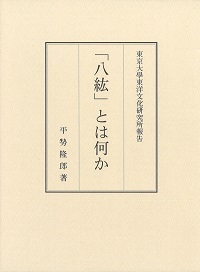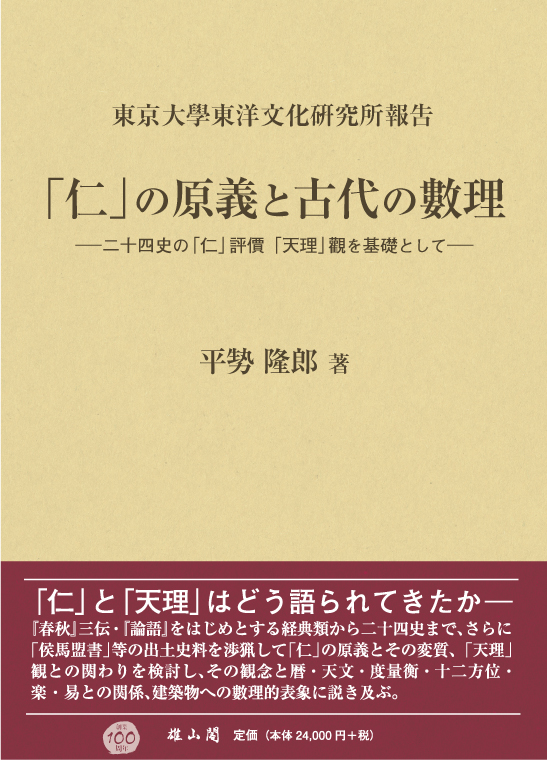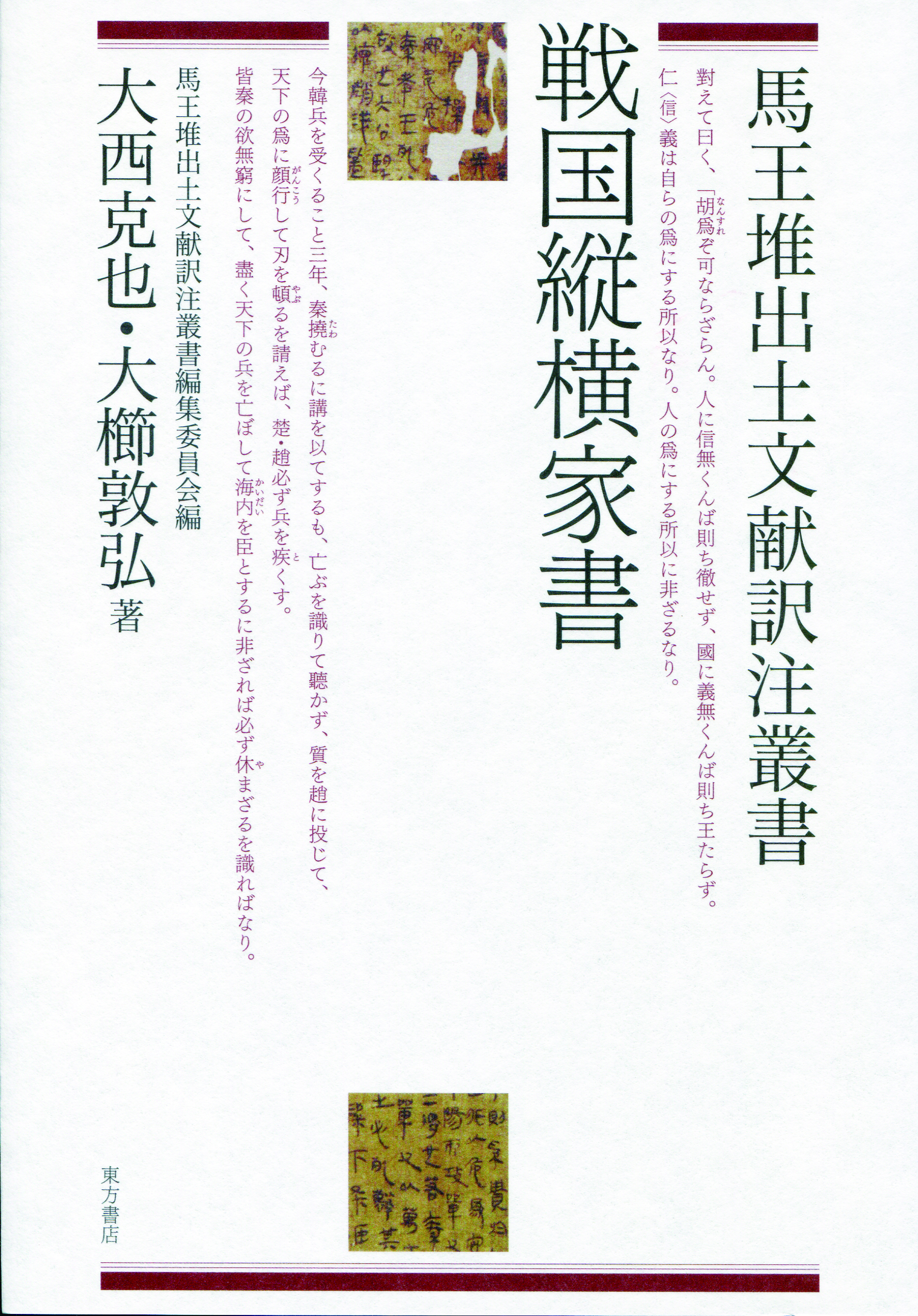
Title
Institute for Advanced Studies on Asia 'Hakko' towa nanika (What '八紘' means)
Size
770 pages, A5 format
Language
Japanese
Released
March 30, 2012
ISBN
978-4-762-92981-6
Published by
Kyoko Shoin
Book Info
See Book Availability at Library
Japanese Page
The best ways to understand the ancient world, including Japan, have been earnestly discussed in the field of historical science in a broad sense that includes archaeology and architecture. When we try to describe the history of China starting at a scale comparable to the kuni in Japan (referred to here as “small territories”), we must go back to the time before Chinese characters existed. The kuni formed an alliance. A limited number of groups (referred to here as “medium territories”) was formed. One of these groups became Yin and another of them became Zhou. The origin of Chinese characters is unknown, but they were used in Yin, which passed them on to Zhou that was formed by a group of neighbors who rose up and defeated Yin. Therefore, inscriptions on bones and tortoise carapaces and bronze inscriptions from both dynasties have been found. The kuni alliances emerged early in China and later entered the surrounding areas. In China, the kuni alliances changed because of the spread of ironware, which led to the emergence of territorial states, in which the core kuni became the center and other kuni became prefectures. This shift also occurred later in the surrounding areas.
In China, a large territorial state comprising several territorial states was developed (referred to here as “large territory”). This was the unified empire of Emperor Qin Shi Huang. Oceans became parts of the territories much later, and they are not discussed in this book.
Chinese characters that emerged in some kuni, were passed on and were subsequently used in several medium territorial states. The territories that used Chinese characters were then unified. It is difficult for people today because the use of Chinese characters during the kuni period, their use in the medium territorial states, and their use in the large territories differ in some important ways.
This book discusses these “differences.” After the unified empire of Qin, large territories significantly changed subsequent the emergence of conquest dynasties, which naturally changed the ways that Chinese characters were used. People tend to assume that the same Chinese characters have the same meaning, which is the “difficult” thing. “Propagation” comes up for debate when we include Japan. One of my mentors, Sadao Nishijima, argued that it was not as simple as water flowing from a high place to a low place. He explained that things do not propagate unless the low place is conscious of the need to develop. If we were to replace the perspective on Japan’s consciousness argued by Nishijima with the consciousness of the alliances of several kuni during the Chunqiu period in China, that consciousness would be passed on to the territorial states of the Warring States period. In addition, those territories identified themselves as special, the surrounding areas as barbarian, and the disputes were merely “vituperations” among states that used the same Chinese characters. Thus, we can gain a deep understanding of the kuni consciousness in Japan.
The term八紘 or bahong (eight corners of the world) discussed in this book is a habitation area of the Han Chinese, which, according to Scribe's Records through the History of Ming (the area, was consistently used and referred to as禹域 (Yu’s area)). The so-called conquest dynasties expanded their territories outside this八紘. Basic terms, such as封建 (feudal) and 五服 (five zones), can be examined in this book. The sequel to this is “Jin” no gengi to kodai no suri (original meaning of the character “仁” and ancient mathematics) (Yuzankaku, 2016).
(Written by HIRASE Takao, Professor, Institute for Advanced Studies on Asia / 2016)



 Find a book
Find a book



